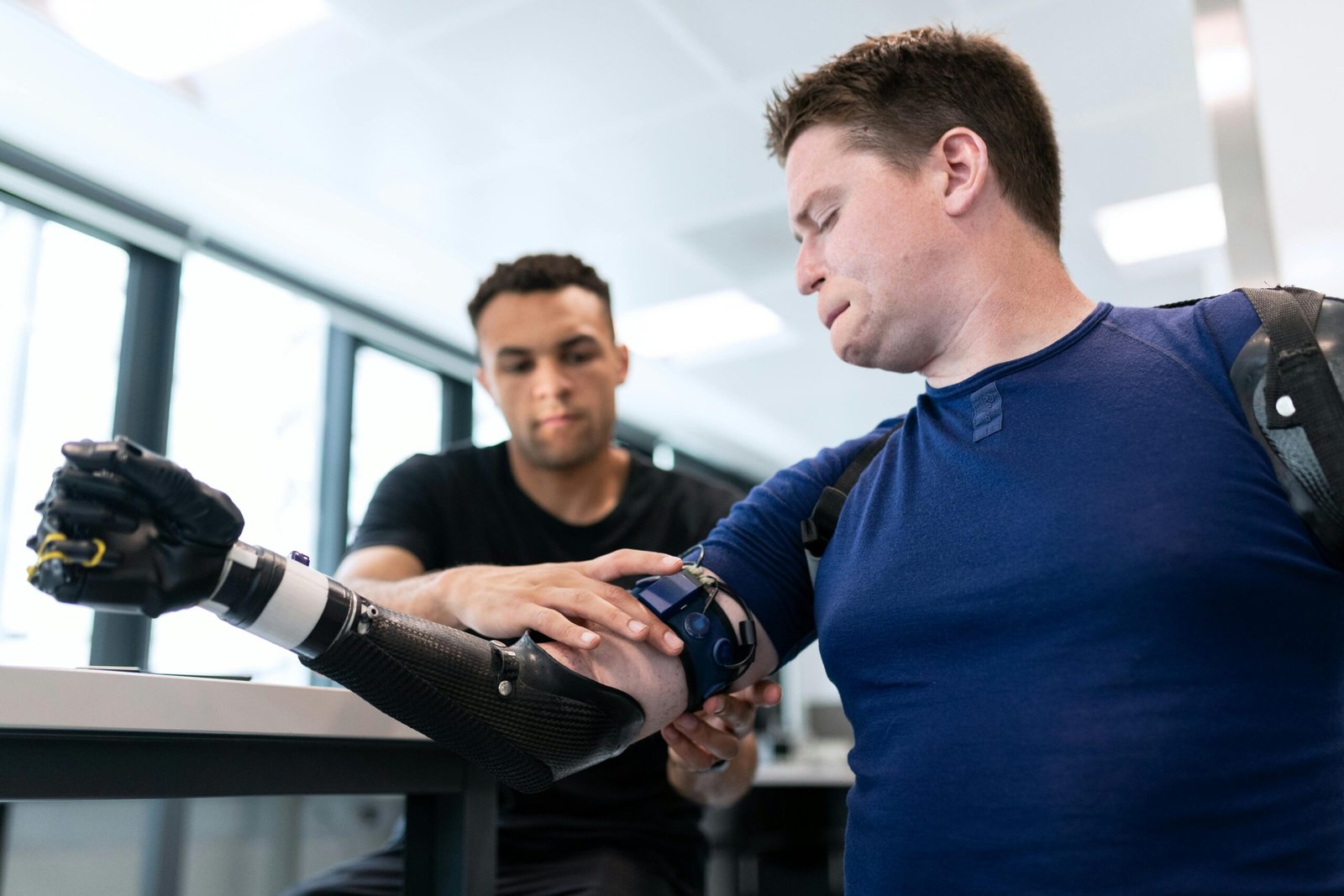Healthcare robotics is one of the most exciting and rapidly advancing fields in medicine today. From assisting with surgeries to improving patient care and streamlining administrative tasks, robotics technology is revolutionizing the healthcare landscape. With innovations emerging at a fast pace, the future of healthcare robotics holds immense potential for improving outcomes, reducing costs, and transforming how care is delivered.
In this article, we will explore the latest trends and innovations in healthcare robotics, providing insights into the future of this groundbreaking technology.
1. Robotic-Assisted Surgery
One of the most well-known applications of robotics in healthcare is robotic-assisted surgery. Robotic surgery systems, like the Da Vinci Surgical System, allow surgeons to perform minimally invasive procedures with greater precision and control, leading to better patient outcomes.
What’s Next for Robotic Surgery?
- Smarter robots: Future surgical robots will feature enhanced AI capabilities, enabling them to assist with complex procedures and learn from previous surgeries, improving their ability to make real-time decisions.
- Remote surgery: Advances in telemedicine and 5G technology are paving the way for remote surgeries, where surgeons can operate on patients from anywhere in the world.
- Autonomous surgeries: Research is underway into developing robots that can perform entire surgeries autonomously, with minimal human oversight, further improving precision and reducing human error.
Benefits:
- Faster recovery times
- Reduced risk of infection
- More precise surgeries with less scarring
2. Robots in Elderly Care and Assistance
As the global population ages, there is an increasing need for tools to help care for the elderly. Robotics is emerging as a solution to help both caregivers and elderly patients by offering companionship, physical assistance, and improving overall quality of life.
Innovations in Elderly Care Robots:
- Companion robots: Robots like ElliQ and Paro provide emotional support and companionship, helping to combat loneliness among the elderly, especially in nursing homes.
- Assistive robots: Robots like robotic exoskeletons or mobility aids help patients regain their independence by providing physical assistance with walking, sitting, or standing.
- Cognitive assistance: Robots are also being developed to help elderly patients with cognitive impairments, offering reminders for medications, appointments, and daily tasks.
Benefits:
- Reduces caregiver burnout
- Provides emotional support and companionship
- Improves mobility and independence for elderly individuals
3. Robotic Prosthetics and Orthotics
Advances in robotics are also transforming the field of prosthetics and orthotics. Robotic prosthetics are now capable of mimicking natural movement with impressive precision, providing patients with greater comfort and functionality.
What’s Next for Prosthetics and Orthotics?
- Bionic limbs with sensory feedback: Researchers are working on prosthetics that offer sensory feedback, allowing users to feel sensations such as touch or pressure, which can greatly improve the functionality of the prosthetic.
- AI-driven prosthetics: The integration of AI and machine learning into prosthetics allows these devices to learn from their users’ movements and adapt to different tasks, improving overall mobility and comfort.
- 3D printing: Advances in 3D printing technology are making prosthetics more affordable and customizable, allowing patients to receive prosthetics that fit their specific needs and body structure.
Benefits:
- More natural and fluid movement
- Customizable and affordable solutions
- Enhanced sensory capabilities
4. Robots for Disinfection and Sterilization
Infection control is a critical concern in healthcare, particularly in hospitals and clinics. Robots designed for disinfection and sterilization are becoming more common, offering an automated solution to help reduce the spread of harmful pathogens.
Innovations in Disinfection Robots:
- UV-C light robots: Robots equipped with ultraviolet-C (UV-C) light technology are used to disinfect hospital rooms, operating theaters, and public areas by killing bacteria and viruses.
- Autonomous cleaning robots: These robots autonomously navigate hospital floors and clean high-touch surfaces, reducing the risk of human error in cleaning and enhancing overall hygiene.
Benefits:
- Reduces the spread of hospital-acquired infections
- Increases efficiency in cleaning processes
- Provides 24/7 disinfection capabilities
5. Robotic Pharmacy Automation
Pharmacy operations, including the preparation, dispensing, and management of medications, are critical for patient safety. Robotic pharmacy automation is revolutionizing the pharmaceutical industry by improving accuracy and efficiency in medication management.
Innovations in Pharmacy Robotics:
- Automated dispensing systems: Robots are now capable of preparing and dispensing prescriptions with minimal human intervention, reducing the risk of medication errors.
- Robotic pill sorting: Robots equipped with advanced sorting capabilities can organize and package medications, improving efficiency and ensuring patients receive the correct prescriptions.
- AI-powered medication management: AI-driven robots are being developed to monitor patients’ medication adherence, automatically sending reminders or adjusting dosages as needed.
Benefits:
- Reduced human error in medication management
- Increased operational efficiency
- Improved patient safety
6. Robotic Rehabilitation Devices
Rehabilitation is a vital component of recovery for patients who have experienced strokes, surgeries, or severe injuries. Robotics plays a crucial role in assisting with rehabilitation by offering precise, personalized, and effective therapy.
What’s Next for Rehabilitation Robots?
- Robotic exoskeletons: These devices help patients regain the ability to walk or move their limbs after experiencing a paralysis-inducing event, such as a stroke or spinal injury.
- AI-driven physical therapy: Robots with AI capabilities can monitor patients’ progress and adjust therapy programs based on real-time data, ensuring personalized and efficient rehabilitation.
- Virtual reality integration: Some rehabilitation robots now combine physical therapy with virtual reality (VR) technology, providing immersive and engaging exercises that accelerate recovery.
Benefits:
- Faster recovery times
- Personalized rehabilitation programs
- Improved patient engagement and motivation
7. Healthcare Robotics and Artificial Intelligence Integration
The integration of AI and robotics is another critical trend in healthcare, enabling even more advanced and efficient healthcare solutions. AI helps robotics systems learn from data, adapt to different environments, and improve their performance over time.
Key Trends to Watch:
- AI in diagnostics: AI-driven robots can assist doctors by analyzing medical imaging, pathology results, and patient data to help diagnose diseases more accurately.
- Predictive analytics: AI-powered robotics can predict patient conditions, optimize treatments, and provide personalized care recommendations.
- AI-powered surgical robots: Combining AI with surgical robots can improve precision and automate certain aspects of surgery, allowing for faster, more accurate procedures.
Benefits:
- Enhanced decision-making for medical professionals
- Improved diagnosis and treatment outcomes
- More efficient healthcare delivery
8. The Future of Healthcare Robotics: Challenges and Considerations
While healthcare robotics promises to bring numerous benefits, there are also challenges that need to be addressed to ensure successful integration into the healthcare system.
Challenges:
- Cost and accessibility: Many advanced robotic systems remain expensive, making it difficult for some healthcare providers to adopt these technologies.
- Ethical considerations: The use of robotics in healthcare raises ethical concerns regarding patient privacy, data security, and the potential for job displacement among healthcare professionals.
- Regulatory approval: Healthcare robotics must go through rigorous regulatory approval processes to ensure they meet safety and effectiveness standards.
Considerations:
- Increased investment in research and development
- Collaboration between healthcare providers, technology developers, and regulators
- Continuous education and training for healthcare workers to work alongside robotic systems
9. Conclusion: Embracing the Future of Healthcare Robotics
The future of healthcare robotics is bright, with endless possibilities for improving patient care, enhancing medical procedures, and increasing the efficiency of healthcare systems. As technology continues to advance, healthcare robotics will play an even larger role in transforming the way healthcare is delivered, making it more personalized, efficient, and accessible.
By keeping an eye on emerging innovations and trends, healthcare professionals and organizations can prepare for a future where robotics will be an integral part of everyday healthcare, helping to improve outcomes and revolutionize the industry.
5 Unique FAQs
- What is the role of AI in healthcare robotics?
AI enhances healthcare robotics by enabling robots to learn from data, make real-time decisions, and adapt to patient needs, improving diagnostics, treatment, and surgery. - How will robots help in elderly care?
Robots can assist with mobility, provide companionship, help with daily activities, and monitor health, improving the quality of life for elderly individuals and reducing caregiver stress. - What are the benefits of robotic-assisted surgery?
Robotic-assisted surgery offers greater precision, reduced recovery times, smaller incisions, and fewer complications, leading to better patient outcomes. - Are robotic prosthetics becoming more advanced?
Yes, robotic prosthetics are becoming more advanced, with features like sensory feedback, enhanced mobility, and AI integration, providing users with a more natural and functional experience. - What are the ethical concerns surrounding healthcare robotics?
Ethical concerns include patient privacy, data security, the potential for job displacement, and the accessibility of robotic technologies, particularly in low-resource settings.





